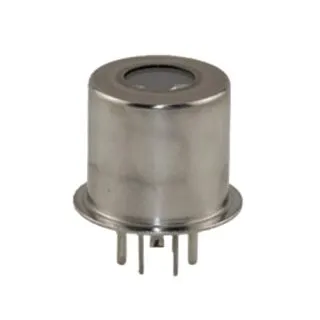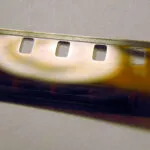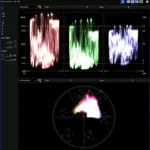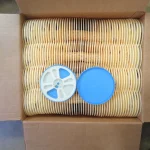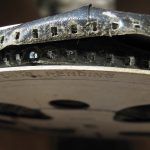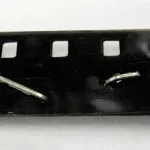Frame-by-Frame and How It Is Achieved
A customer asks: "Can you confirm if you are filming or capturing each frame separately?"
Yes, we are "filming" in real time — but each and every frame is captured separately — as a single individual image/frame, recording at 25 frames per second. The speed is later corrected to 16, 18, or 24 fps keeping frames individualized. We are strongly of the belief that having duplicate or mixed frames is bad. Therefore, we provide you with files that are set to reflect the frame rate your film was original exposed at.
Background, and how we make it work: The camera is setup for 25 fps (Full-HD 1920 by 1080) progressive recording (not interlaced -- interlaced is less sharp)! Note: We do not simply use a CCD camera, rather a 3CCD camera -- 3CCD's cameras produce a sharper more true image, especially when the subject matter has a lot of grain.
The projector's motor is interlocked to the camera video signal; and transports the film at whatever frame rate the video cameras is set to. The motor speed control unit gets the video frame sync signal "frame start time" straight from the video camera v-sink signal.
Independently, a laser is reading the sprocket hole edge and fires off a single strobe per frame. The strobe light duration is very short (1μF of a second, e.i. one millionth of a second); which equals 1/37th of a pixel height while the film is kept in motion at 25 fps (1 second/25/1080/37 = 1μF.) The strobe light freezes the image in time so that the 3CCD camera chip can capture it. This is what makes it a flash-scanner. Note: We protect your film by filtering out the unusable light; the light that is outside the visual spectrum range.
In addition, the strobe "time" is fed back to a separate film path pulley that influences when the strobe goes off. The strobe-time needs to be kept within a mid-range of the "start-" and "end-time" of the camera capture window. This is necessary 1) to make sure we will not miss a frame (resulting in a black frame), and 2) to compensate for film shrinkage, which can vary significantly! Important to say .... We do NOT correct film shrinkage with changing the speed of the motor, as this would have a negative effect with any audio playback/recording.
Furthermore: We can use either the lower edge or upper edge of the sprocket hole to trigger the strobe-light. The lower edge is technically the proper edge to use, because this was the edge used during the initial filming. It is the edge used by your camera's pull-down claw, which pulled the film in place for exposure. However, the upper edge is usually cleaner (less worn out) -- home projectors sometimes damaged the lower edge. This is why we generally like to use the upper edge. It gives us more accurate strobe timing.
 Take a peek!
Take a peek!



